12 Basement Flooring Ideas Other Than Concrete
Who said basements had to be so drab?
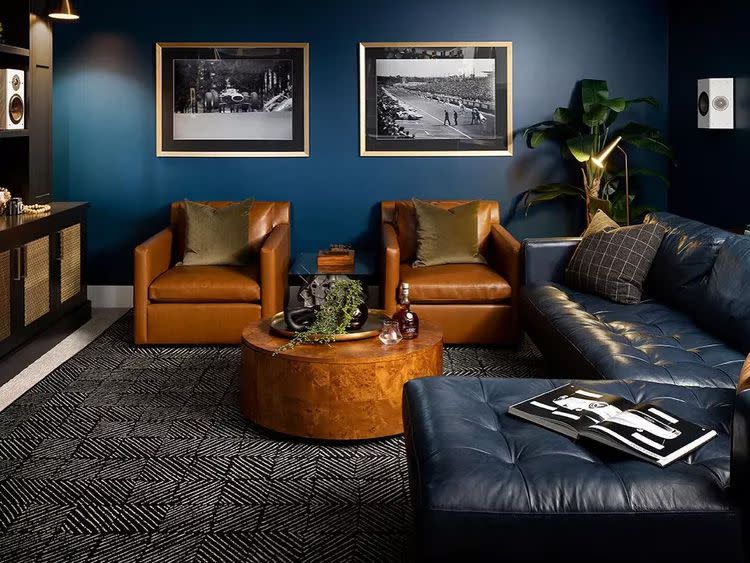
DESIGNER: LOUIS DUNCAN-HE DESIGNS / PHOTO: EYERMIC WILDLING
Finishing the basement comes with a lot of work, specifically with the flooring choice. Often times, this room of the house gets overlooked with design loved and appears more cold in design. But, with all the extra room basements have, finishing the space and putting down decorative flooring options is a beautiful way to increase the charm and make the space more enjoyable!
Do you have a basement in your home? The good news is that you don't have to live with the bleak concrete forever. "There are multiple options when it comes to flooring for basements: hardwood, wall to wall carpet, painted concrete, luxury vinyl, engineered wood, and even tile. It really depends on your goals and usage for the basement," says Andi Morse, an interior designer in Atlanta, Georgia.
Meet the Expert
Andi Morse is the owner and lead designer at Morse Design in Atlanta, Georgia.
Thinking of remodeling your underground hangout? Here are the best basement flooring types to lay down so you can enjoy this space, plus gorgeous basement ideas!
How To Choose The Right Basement Flooring
Being a high-moisture room, the basement flooring has to be carefully selected to hold up to the extra dampness this area of the room creates. With that said, the best flooring choices for a basement are those with durability and waterproof features. "Because basements are the lowest point in a home, they can be more susceptible to flooding, as well as breaks from water heaters, etc.," Morse tells us. "Whatever is put in the basement needs to be able to withstand these potential hazards. I always recommend a professional to install the floors, no matter the type."
Once the logistics are out of the way, from there, it's all about comfort and style. "The most important factor is usage: how will the homeowners be using the basement? Who will be using it the most: adults and/or kids? Will there be a gym? How much is their budget? Are they in a part of the country that receives a lot of rain where flooding could be an issue?," says Morse. "Knowing these answers will help direct them to the best choice."
Of course, your personal style is not something to sacrifice when it comes to look basement flooring ties in to the room. As you go to choose your type and aesthetics within your type, Morse says to consider the goals of this room and what you're looking to use it for. "Is this an adult entertainment area or a kids playroom? Is the home located in an area that gets a lot of rain and moisture? What's the budget? All of these considerations need to be taken into account to make the best decision."
Basement Flooring Types
Engineered Wood
Wood? In the basement? Yes, it's possible, as long as the flooring in the form of engineered wood. Real hardwood floors should stay in the main living areas of your (above the basement) since this flooring type is prone to swelling from too much moisture.
But, if you're like us and obsessed with the look of hardwoods, engineered options give you the real wood look while being durable to fit in perfectly with the high-moisture environment. The only kicker is that it's not waterproof, but water-resistant. On the plus side, this option is exceptionally friendlier on your wallet, too.
Carpet
Carpet makes excellent flooring in any finished basement, specifically if you're using the room as another play area for children. More than its soft landing, carpet in the basement adds extra insulation for a warmer room, which will come in handy during the cooler months.
Painted Concrete
Ah, concrete. The standard basement flooring option. While this standard basement flooring option looks dull and bleak, we highly recommend elevating this standard option with some good ole paint... but not the kind you're thinking.
Painting the basement flooring is not the same as painting your interior walls. Instead of painting the floor a bold color, you're painting the surface with a glossy epoxy that adds a gorgeous shine to the floor's appearance, with a purpose! This paint boosts the durability of the floor by adding a protective coating from dust, spills, or impact that extends the life of your floor.
Luxury Vinyl
For those who want a hardwood look but with true waterproof capabilities, LVP (luxury vinyl plank) is your best option. These planks look exactly the same as engineered wood, but have the extra durability engineered wood planks don't have. If your basement produces an abundance of moisture, LVP is the option to consider.
Tile
Similar to concrete, tile is a standout choice in basement flooring since it's tough and durable. Tile also comes with a wide variety of shapes, styles, colors, and designs perfect for adding extra personality to the overall design of the room. The only thing to remember with choosing tile as your basement flooring is that they are not completely waterproof. Tile is a porous material, which means water can seep into the material overtime and lead to mold growth. To counteract this is to use a sealer to minimize water exposure.
12 Basement Flooring Ideas
Go For Two
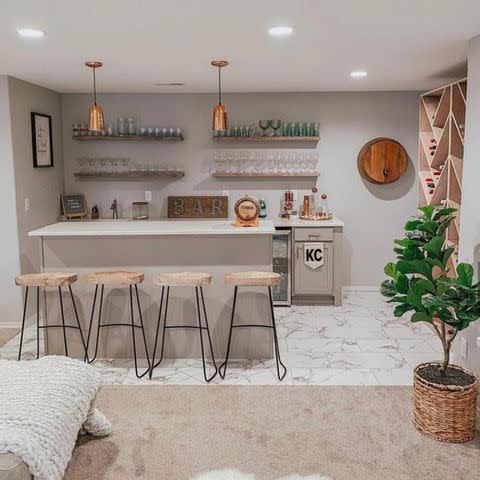
Sarah Fischer
Can't decide on a basement flooring type? Choose two, like Sarah Fischer did here in her home's basement. The carpet covers the majority of the living area while the marble tile adds a trendy contrast in the wet bar.
Make It Glossy
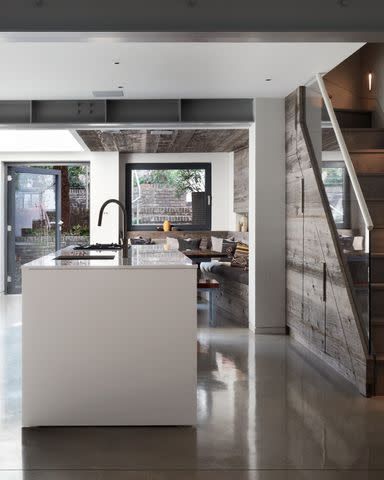
Catherine Wilman Interiors
This basement flooring concept from Catherine Wilman beautifully showcases a painted concrete floor. While basements are considered to be a more rugged room because of their elements, adding the sheen from the coating makes it feel more expensive and elegant.
Focus On Opulence
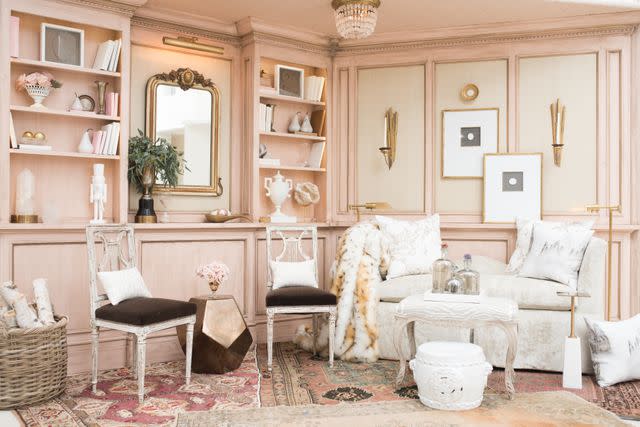
Designer: Leah Bailey Interiors / Photo: Kelli Boyd Photography
For the ultimate basement design, why not go over the top? As you build your design along your walls with colors, fixtures, and decor, get your flooring in on the fun with playful oriental area rugs that tie in the same colors. Layer these on top of your flooring (more so if you're not going the carpet route) for a soft place for your feet.
Make It Weathered
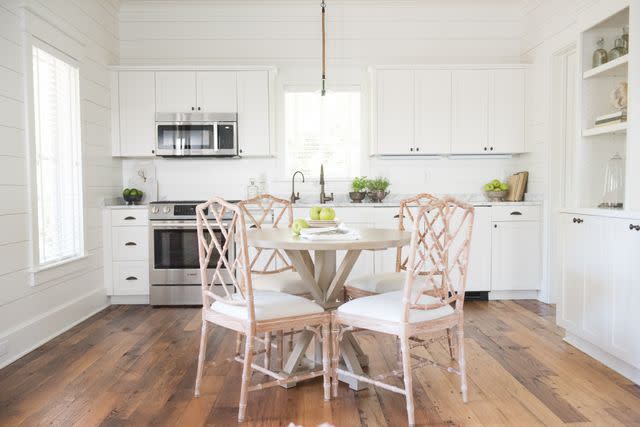
Designer: Leah Bailey Interiors / Photo: Kelli Boyd Photography
There's just something about southern homes that are instantly drawn to weathered wood flooring. While real weathered hardwoods won't hold up well in this space, that doesn't mean you can't achieve the same affect with an engineered or LVP pattern that contains the same look.
Play With Patterns
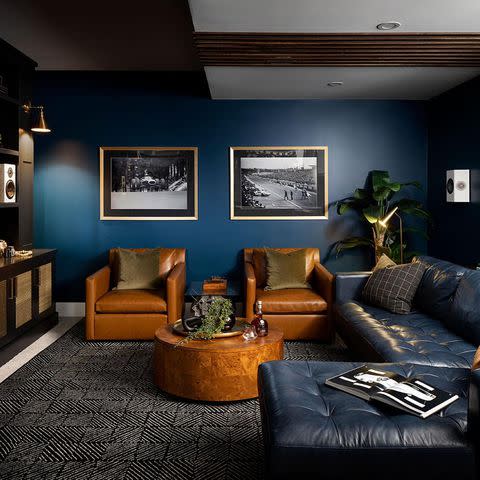
Designer: LOUIS DUNCAN-HE DESIGNS / Photo: Eyermic Wildling
Experiment with design in your basement through the inclusion of playful patterns. In this design by Louis Duncan-He, rich notes of blue pop against the rust leather sofas while the fun striped floor rug breaks up the solid colors. If you hang certain fixtures in the room, like the brass wall scones here, tie them together with throw pillows containing similar tones.
Build Character With Tile
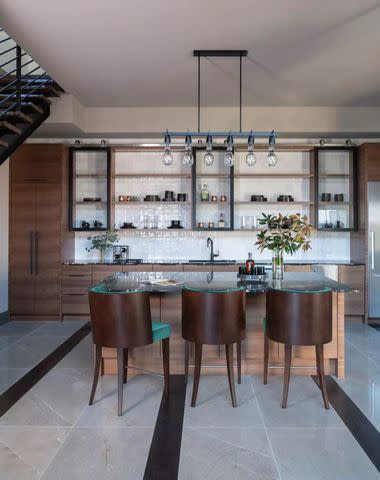
Michael Hunter
We love the character tile creates in this basement, which makes you forget you're underground. Tile patterns do an excellent job putting emphasis on a basement's design to help the room come alive through visuals.
Think Rustic
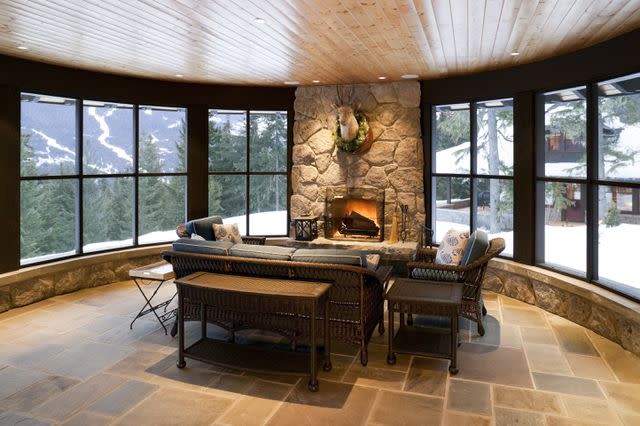
Getty Images
Although, if you want to keep the rustic environment in your basement, tie in natural materials along your floors with brick (as seen in the photo above) and stone on the walls. These two materials are more weathered and durable for added texture that elevates the rustic feel.
Carpet The Living Section
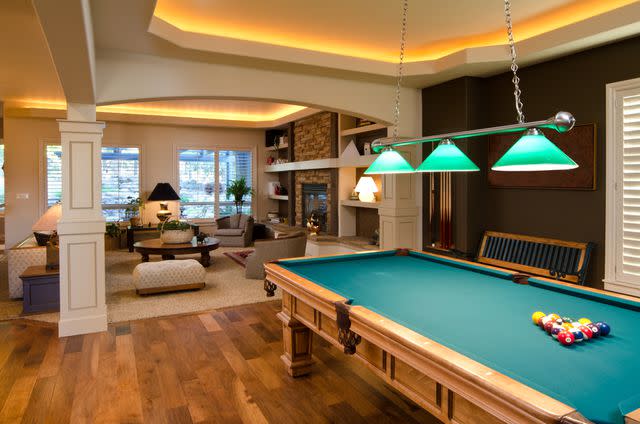
Getty Images
For anther dynamic duo in the basement, we highly recommend being strategic with your flooring option. Are you segregating the basement with a lounge area apart from a kitchen? Including toys such as a heavy pool table in one area of the room? Lay down certain floor types for specific uses of the room. Use carpet for your couch and lounge areas before placing harder floor types such as LVP or engineered wood around the kitchen.
Choose Lighter Stains
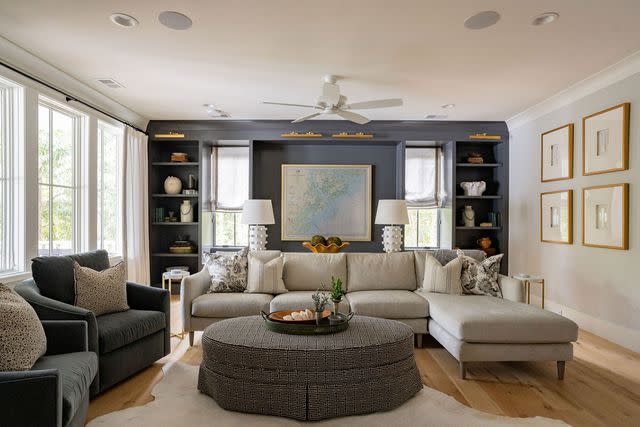
Designer: Leah Bailey Interiors / Photo: Kelli Boyd Photography
When we think wood floors, our minds typically go to darker stains, but lighter stains like the one used here is a smart choice in the basement. The lighter wood mixed with the creamy side walls creates a brightening effect instead of the standard dark and gloomy basement.
Pop With Pink
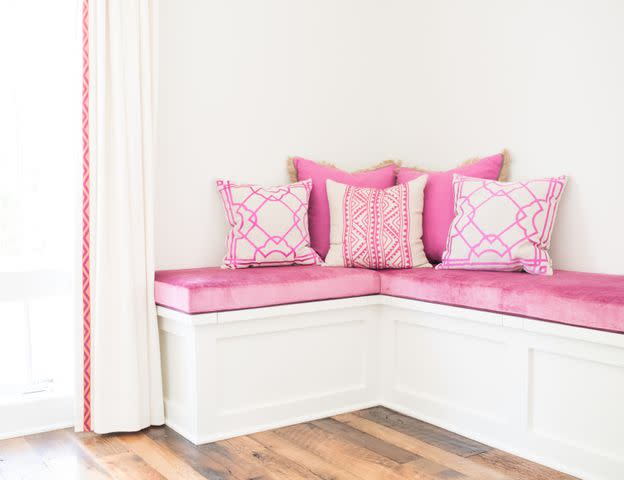
Designer: Leah Bailey Interiors / Photo: Kelli Boyd Photography
We adore a bright basement that gets lots of natural light, and this bright and room is anchored with the pink cushions. If pink isn't your color, choose another fun color that complements your flooring choice and adds a splash to the room to contrast the brightness.
Don't Forget A Rug
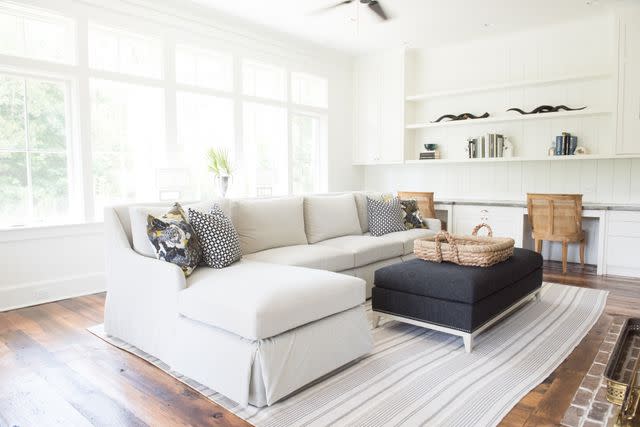
Designer: Leah Bailey Interiors / Photo: Kelli Boyd Photography
There's a lot of texture in this space from the wood grain on the flooring and the vertical shiplap along the walls. To soften it, Leah added an airy rug with stripes for more visuals and comfort along the harder flooring.
Wall-to-Wall Your Carpet
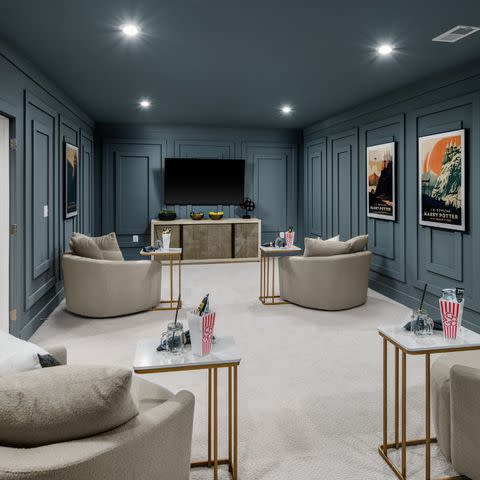
Stanley Martin Homes
This basement movie room from Stanley Martin Homes gives us all the cozy feels. If your basement has no windows, lay down carpet in a lighter shade to lift the room with brightness it's missing from natural light. For extra interest, add board and batten to your walls.
For more Southern Living news, make sure to sign up for our newsletter!
Read the original article on Southern Living.

